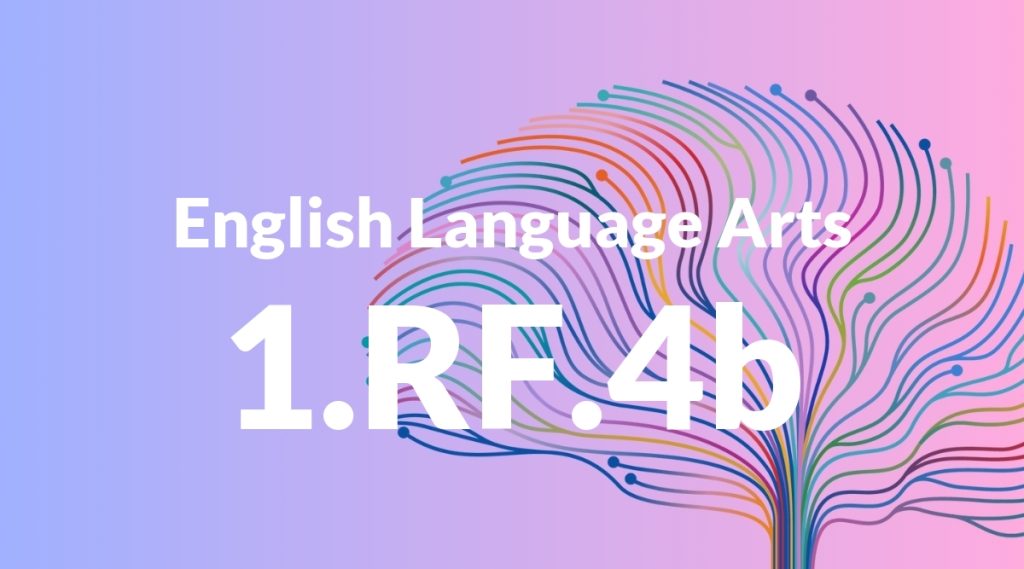Standard: 1.RF.4 – Read with sufficient accuracy and fluency to support comprehension.
Grade level: Grade 1
Subject: English Language Arts
Domain: Reading: Foundational Skills
Teacher Overview
This standard emphasizes the importance of reading with accuracy and fluency to support comprehension. It is crucial as it forms the foundation for all future reading skills. By mastering this standard, students will be better equipped to tackle more complex texts in higher grades. Students should be able to recognize and decode simple words, understand basic phonics principles, and have a repertoire of sight words.
After mastering this standard, students will be able to read more complex texts with better fluency and comprehension, setting a strong foundation for future learning.
Common Misconception 1
A common misconception is that reading quickly is more important than reading accurately. This is incorrect because accuracy is essential for understanding the text. Speed will naturally improve with practice.
Intervention 1
To address this misconception, use repeated readings of the same text. This helps students focus on accuracy first, and as they become more familiar with the text, their speed will improve.
Common Misconception 2
Another misconception is that decoding words is the only goal of reading. This is incorrect because comprehension is the ultimate goal. Decoding is just the first step.
Intervention 2
To remediate this, incorporate comprehension questions and discussions about the text. This will help students understand the importance of making sense of what they read.
Prerequisite Knowledge
Students should have a basic understanding of letter-sound relationships, the ability to decode simple words, and familiarity with common sight words.
Subsequent Knowledge
Students will develop the ability to read more complex texts with greater fluency, improve their comprehension skills, and be able to analyze and discuss the content of what they read.
Instructional Activities
- Paired reading with a peer
- Echo reading with the teacher
- Choral reading as a class
- Using a reading fluency app
- Timed reading exercises




